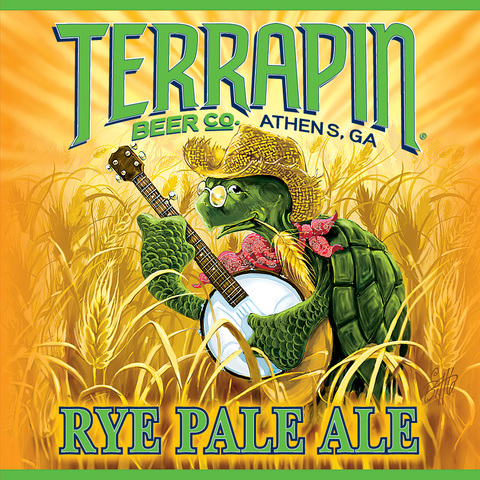 |
A veritable cornucopia of beer choices,
a horn of plenty if you will |
The good
thing about blog writing is that these pesky little posts of mine have dates on
them, which means I get a weekly reminder of what the date is. Seriously,
without them, I may never remember where on the calendar I am.
So
imagine my surprise when I sat down this dreary Saturday morning to write and
saw that the date is already November 16th! As in, Thanksgiving is a
week and a half away! I don’t know if your family is like mine, but menu
preparations are almost as big a deal as the meal itself. With particular
attention paid to…
BEER PAIRING!!!
And
since it is my yearly tradition and honored privilege to do so, I bring you my
2013 edition of what beers to pair with your traditional Thanksgiving dinner.
Free of charge. Because I know how overwhelming menu planning can be from a
food standpoint; at least the beer part should be easy. Let’s begin.
 |
| Wait, what?! |
Ordinarily,
beer pairing is accomplished by finding multiple beers that compliments each
course individually – as in one different beer per course. The problem with
Thanksgiving is, usually the courses are served simultaneously in the form of a
literal ton of food placed on the table that we eat at the same time. You could
pick a different beer for every food on your table, and bombard people with 6
or 7 glasses of beer in front of them, or you could find one beer that does a “pretty
good” job of pairing with everything. But what beer should you pick?
 |
| You're welcome. |
The
Thanksgiving dinner plate typically has serious diversity in flavors, textures,
temperatures and weights, making it problematic to pick a single beer to pair
well with everything you consume. The key is to find the common characteristic
across each menu item, and in this case, believe it or not, the common
characteristic isn’t food at all, it’s your oven. All the best stuff on the
Thanksgiving table comes from your oven: turkey, stuffing, sweet potatoes,
pies, etc.
Generally
speaking, when food is cooked in the oven, it undergoes browning and
caramelization—just like the darker malts used to create amber and
brown-colored beers do when they are kilned and prepared for brewing. The similar
flavors created by these shared processes offer a good balance between darker
malty beer and oven-roasted food. Keeping this in mind will help you narrow the
field to a few beer styles.
Bière de Garde:
Most
beer experts recommend Bière de garde as the best versatile style for
Thanksgiving. It’s a good call. BDGs, as I call them, are adequately forceful in
alcohol and carbonation to stand up to richness but subtle enough in flavor to
avoid dominating your delicate Thanksgiving dishes. In fact, the amber (or
"ambrée") versions of the style have a more bready, toasty and
caramelly malt flavor alongside fruity and spicy yeast character, which go
quite well with the autumnal flavors of Thanksgiving. The only problem is
availability, but if you have access to a specialty beer store in your neck of
the woods, it shouldn’t be a problem.
 |
| Some examples of BDGs - so you know what to look for |
Dubbel:
Belgian-style
dubbels are more common than BDGs and make a statement at the dinner table. They
are traditionally bottled in elegant cork-and-cage finished 750mL bottles and
look like beers worthy of celebration. They drink pretty well too. Dubbels lift
the mouth-coating richness of gravy and dairy-laden mashed potatoes from the
palate due to high carbonation and pack a one-two punch of dense dark fruit and
peppery, clove-like phenol character that complements sweet potatoes, stuffing,
cranberry sauce and the star-of-the-show turkey itself.
 |
| Some Belgian dubbel abbey ales to choose from |
Märzen/Oktoberfest:
Characterized
by toasty malt dominance, moderate in alcohol and low in bitterness, these
beers are an ultra-safe but effective play for your Thanksgiving table. There's
nothing here to throw your food out of balance, great examples can be had for
cheap, and your guests will probably be at least somewhat familiar with beers
of this style already. Dunkel lagers and drier doppelbocks feature a similarly
malt-forward flavor and will behave the same way.
 |
| Absholutely. |
Scotch Ale:
Scotch
ales are all about smooth, caramelized malt character. Red grape, toffee, and
peat smoke flavors are par for the course here, offering savory and sweet
complements to your plate. These beers have some bollucks to them, weighing in
with enough ABV to hang with the richer dishes. They can be great with dessert
too, but reserve that for sweeter examples.
Brown Ale:
Brown
ales have expanded far beyond the scope of one-dimensional Newcastle
facsimiles. You'll find toasty, roasty, nutty and chocolatey flavors packed
into your average brown ale and many examples (especially the American-brewed
ones) feature a significant hop profile as well. Expect a balanced beverage
that will fit in comfortably with everything on your dinner plate.
What
about desert? Glad you asked. Pairing beer and dessert can be equally
cumbersome to pairing beer with dinner, once again due to the diversity.
Frequently encountered flavors like pecan, apple, and pumpkin all appear on
your plate at once – bombarding your palate with sweet, spicy, tart, rich,
bright and weighty, all at once!
 |
| Mmmm... pie and beer |
The best
solution to this great problem to have is a sweet-leaning English-style
barleywine. These beers offer a deep malt complexity that works really well
with pie. Expect a full range of caramel, toffee, and dark fruit character from
these beers, all welcome complements to pecan, pumpkin, and apple pie.
A good
milk stout (aka sweet stout) will offer an appropriately-sweet chocolatey
counterpoint to your pecan and pumpkin pies as well. Depending on the stout, the
sweet chocolate flavor may overwhelm on it’s own, but with pecan and pumpkin
pies, it tastes more balanced, offering a satisfying back and forth between the
sweets and the beer.
If you’re
focusing on an apple pie only route and want to try something different, sweeter
dunkelweizens are great with less-sweet apple pies. They are typically packed
with banana, raisin and nut flavor, and a zippy clove-like yeast character.
They pair brilliantly with the cinnamon-apple flavor of apple pie.
 |
| No Duff at the Thanksgiving dinner table |
This
concludes my 2013 edition of “what to drink at Thanksgiving.” You are now armed
to the teeth with good advice on what beers go best with your meal, and really
impress your guests with how beer-enlightened you are. In fact, if you memorize
some of what I said here, you can serve your beer, and explain why it works,
and then they’ll really be impressed with your ability to nerd out. And you’ll
be the hero of the day.
Here’s
to craft-brewed happiness… Cheers!






















